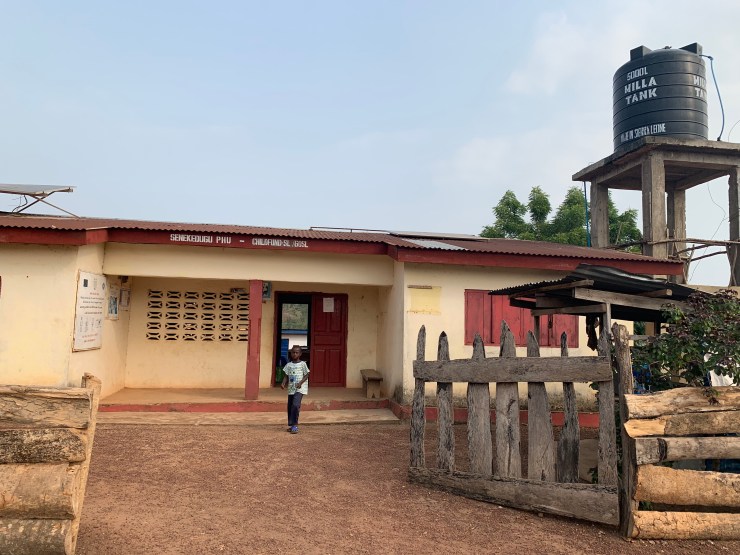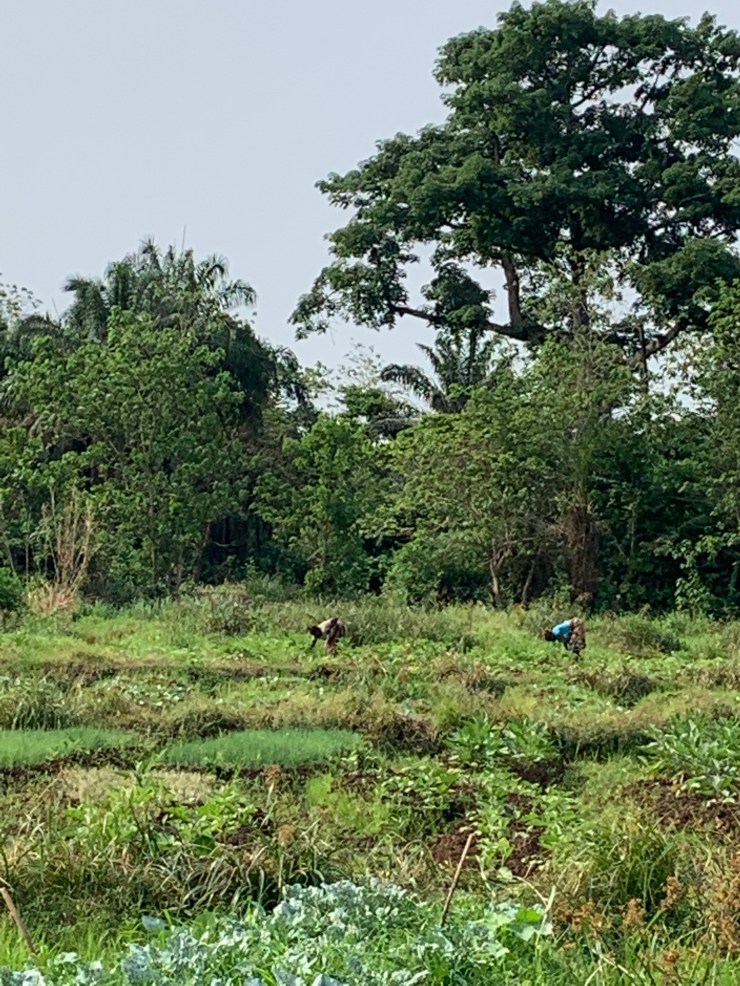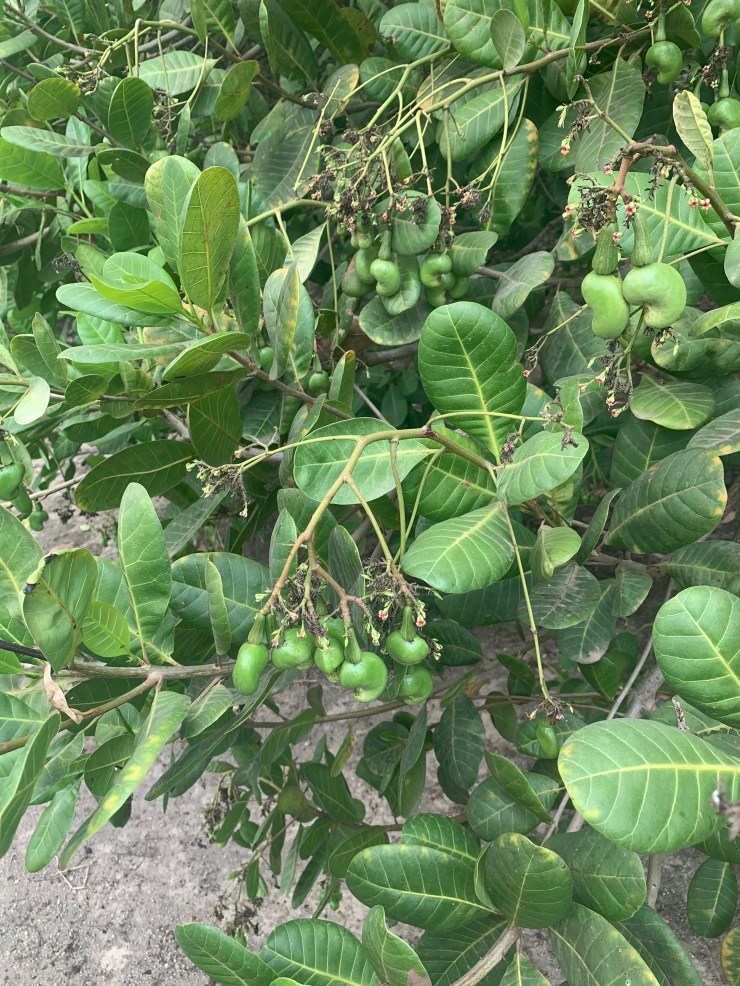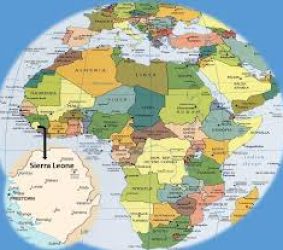While in Kabala I had an opportunity to visit a village, Senikadugu, that raises vegetables to export to Freetown in addition to growing to feed themselves. Because the village is on the main road heading north to Guinea it was heavily impacted by Ebola and as a consequence had been the recipient of significant aid from international donors. Attention-getting tragedy does often seem to be followed by donor aid. The agricultural support, the village well and the primary school and village clinic buildings were all the result of international aid.
Below is the obligatory picture of me with the chief (to the right of me in the special traditional country cloth shirt) and other village leaders after the presentation of the kola nuts and my adoption into the village (that part is not usual). I think I was adopted to either encourage me to donate to the village or come back and see children at the PHU – both were suggested.

I was able to visit the clinic called primary health unit here, or PHU’s. These are the smallest unit of the primary health care system. Health care for pregnant women and children under five years is free and primarily what is provided at the PHU. It is limited to prenatal and well baby care, immunizations, and very basic acute care.


I was also taken on a tour of the fields in the lowland near the river and left with gifts of lettuce, tomatoes and cucumbers straight from the fields. They also grow groundnuts (peanuts), cabbage, okra, zucchini, beans, chili peppers, cassava, potatoes, and eggplant. Note how the planting on mounds of earth. All this is done by hand. Tractors are rare. In most places, the area is burned, the brush cleared, and the soil prepared by mounding it into hills or beds. Then it is planted as the rainy season approaches.


In Rogbonko, a teenager named Mohamed gave me a tour of the fields and orchards. They grow such a wide variety of crops – many of the same vegetables as Senikadugu, but also have cashew, kola nuts, coffee, papaya, mango, banana, jackfruit, coconut, palm nuts and avocado growing on trees.



Above are cashews – unripe and ripe. The fruit can be delicious and juicy. Note the beehives hanging in the cashew orchard.


Above is rice and the hut where someone has to hang out all day to chase away the birds.

And pineapples between the palm trees. When we first started our walk, I thought the village was surrounded by forest. I realized, as we went along, that most of it was cultivated to grow something edible. Many things were planted mixed together in such a natural way that I had completely missed them.
Below are some pictures of palm nuts being processed into oil.


Villagers also fish in the river that runs close to the village and smoke the fish to keep them longer.


Rogbonko village, like most villages, keeps goats and sheep as well as chickens and ducks. The chicks are dyed pink and green to keep hawks from eating them. They swear it works.
Large mango trees are everywhere in Sierra Leone and the season has started. They are for sale along all the roadsides and everyone you see seems to be eating one. People often eat it skin and all leaving only the pit which is left lying on the ground.


That’s amazing you got to see how everything is grown and harvested and get to sample some of it too.
Cool that you were adopted into the village !
Have a great rest of the week !
Lisa
LikeLike